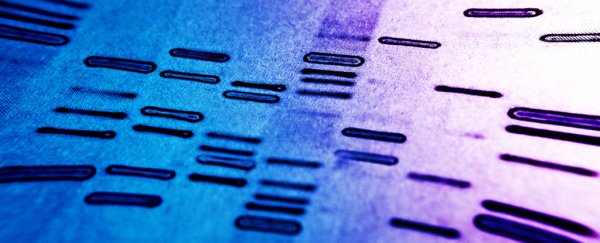Two groups of scientists have revealed a new, more precise arsenal of gene-editing techniques that could one day help us eradicate genetic diseases with highly targeted surgery at the chemical level.
The new adaptations to CRISPR-Cas9 enable single-letter changes in DNA base pairs and also provide the ability to edit single RNA base pairs in human cells – powerful refinements that some are heralding as the arrival of 'CRISPR 2.0'.
"We developed a new base editor – a molecular machine – that in a programmable, irreversible, efficient, and clean manner can correct [mutations] in the genome of living cells," says chemical biologist David Liu from the Broad Institute of MIT and Harvard universities.
"When targeted to certain sites in human genomic DNA, this conversion reverses the mutation that is associated with a particular disease."
About half of human disease-associated 'point mutations' come down to mix-ups in the nucleobase pairs between the chemicals adenine (A), cytosine (C), guanine (G), and thymine (T), which make up our DNA.
Thanks to CRISPR-Cas9, however, scientists can alter genome structures with a technique that effectively cuts, copies, and pastes molecular arrangements of these base pairs – but up until now, the technique wasn't able to switch single DNA base pairs and instead removed entire sections.
A new system developed by Liu's team called Adenine Base Editor (ABE) changes this, making much neater edits possible, by rearranging the atoms of adenine to resemble guanine (G), prompting A-T base pairs to becomes G-C instead.
That might not sound like much, but of the 32,000 point mutations that we know are tied to disease, about half could be solved via that single swap.
When combined with other base-editing systems called BE3 and BE4 – which were also devised by Liu's team – the discovery could help us fix almost two-thirds of all disease-causing mutations.
The greater precision of the technique should enable finer genetic manipulations than ever before, introducing fewer random errors carried over from adjacent nucleobases that are inevitably copied over with the targeted DNA.
"If your task is to cut and paste something, then you need scissors," Liu explained to Deborah Netburn at the Los Angeles Times.
"If your task is to fix just a single letter, a pencil is best."
In a separate but related study published in Science, another team from the Broad Institute details its development of what's called Cas13 – a CRISPR protein that makes editing of RNA possible.
Unlike DNA editing, which makes permanent changes to a genome structure by rearranging nucleobases, RNA editing is a lighter, non-permanent technique, in this case made possible by another precise swap: changing adenosine to inosine, which is interpreted in cells as guanine.
In cells, RNA acts as a kind of messenger that helps to regulate how our genes produce proteins.
Because it doesn't actually mess with the genes themselves like DNA editing, the method wouldn't result in lasting, significant changes to how our bodies function, but could still create temporary ways of addressing mutations.
"So far, we've gotten very good at inactivating genes, but actually recovering lost protein function is much more challenging," explains senior researcher Feng Zhang.
"This new ability to edit RNA opens up more potential opportunities to recover that function and treat many diseases, in almost any kind of cell."
Of course, it will be some time before either of these new systems find their way into helping patients in clinical situations, as while the technology now exists, we won't ultimately know how reliable, safe, and effective these methods are until more research on them is conducted.
But they're both incredibly promising developments in health science, and ones that may one day be used to treat conditions including genetic blindness, metabolic disorders, Parkinson's disease, and many more.
"Creating a machine that makes the genetic change you need to treat a disease is an important step forward, but it's only one part of what's needed to treat a patient," says Liu.
"We still have to deliver that machine, we have to test its safety, we have to assess its beneficial effects… But having the machine is a good start."
